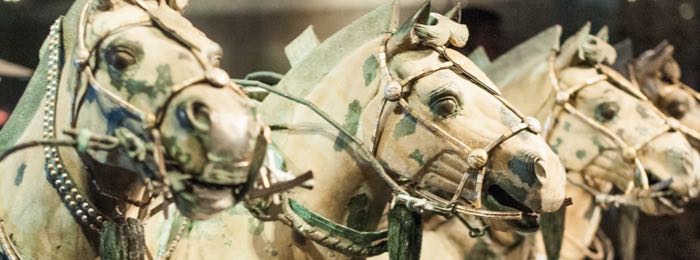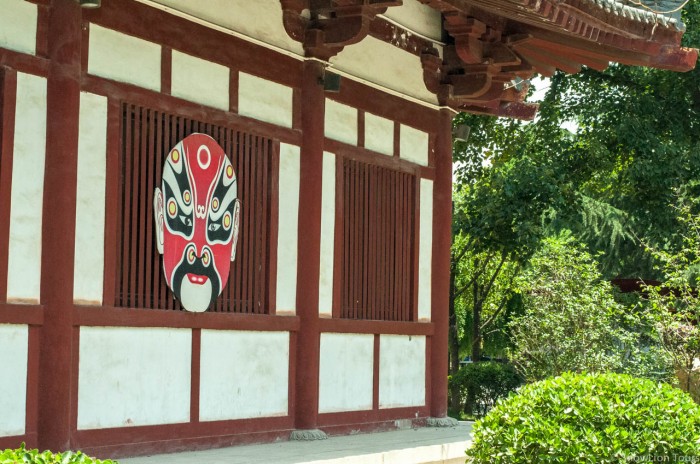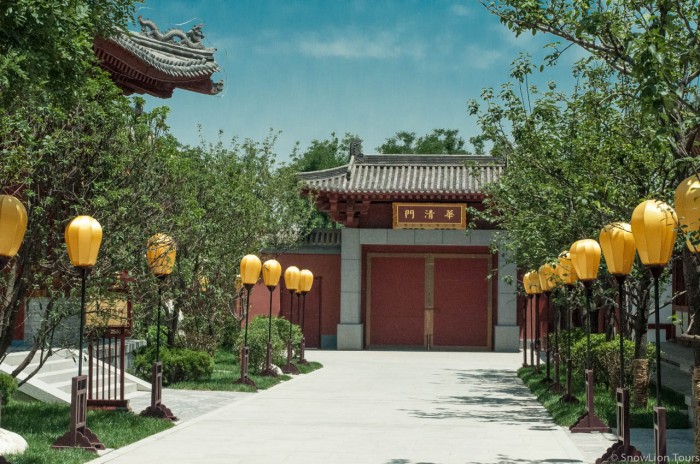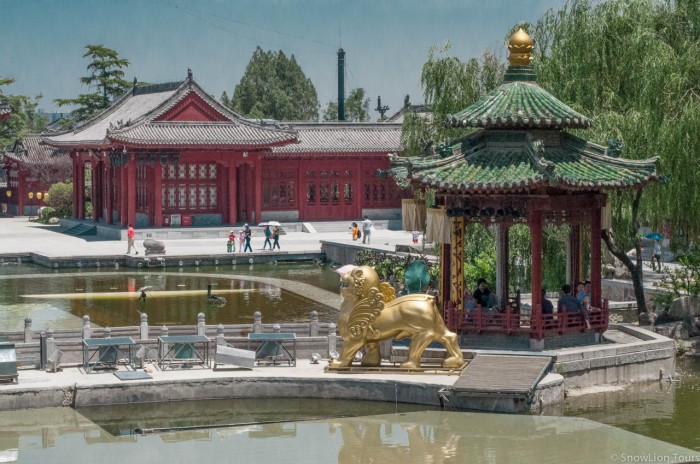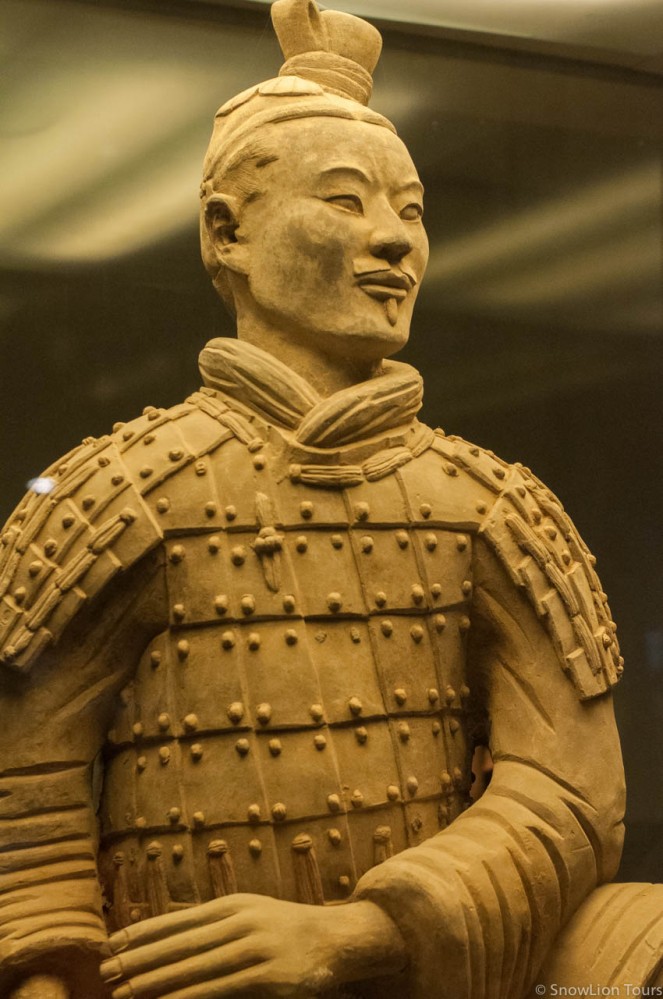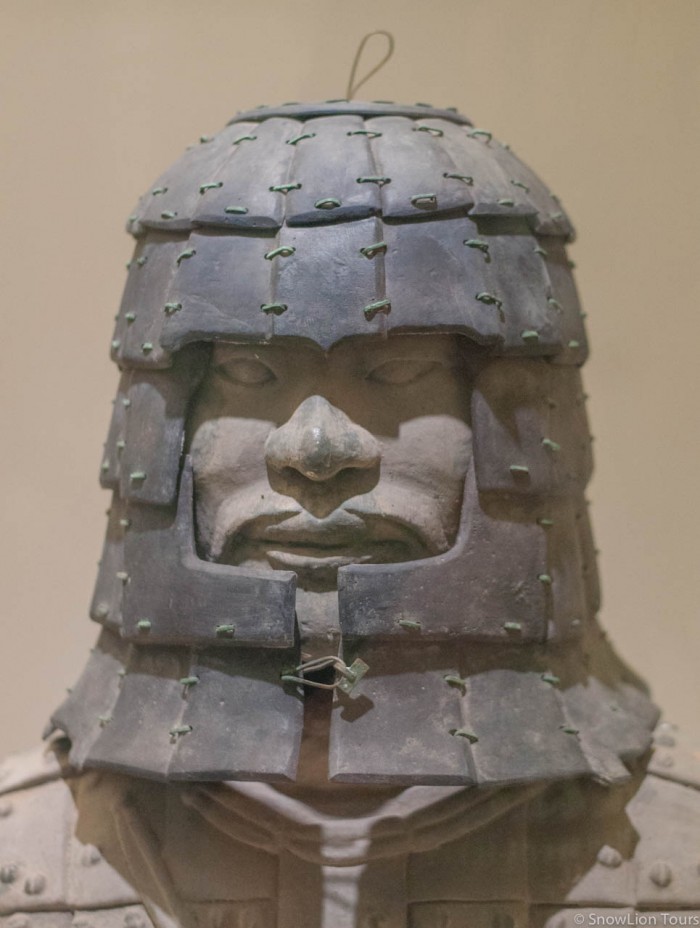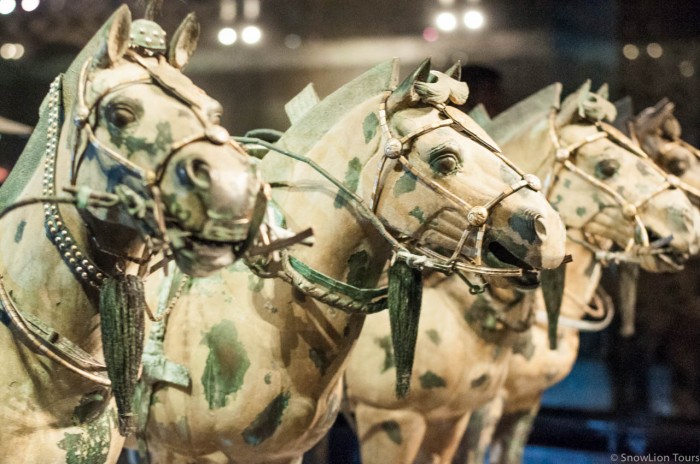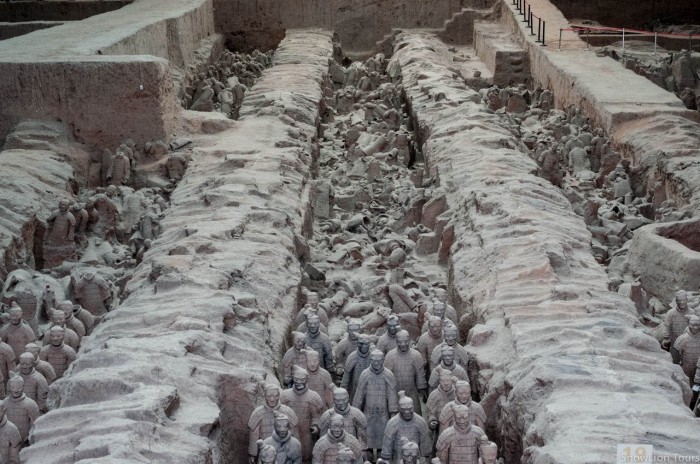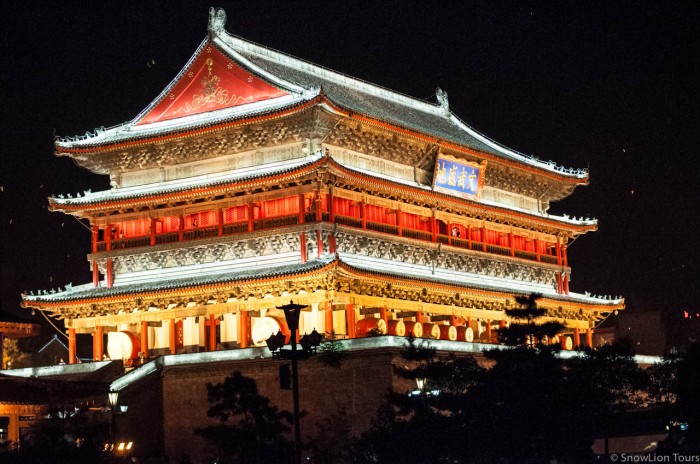This tour offers one of the best China experience tour you can have. Explore the the modern capital city of China which is the political and Cultural center of China and visit historic sites such as Great Wall, Forbidden City, Tiananmen Square, Temple of heaven, Beijing Lama Temple, Yiheyuan Summer Palace to the ancient capital city of China – Xi’an City. You will explore wonders of the world by visiting Xi’an Terra-cotta soldiers and horses, Big Wild Goose Pagoda, Shanxi History Museum, then take an overland trip to visit Xining city, Tibetan Medical and Cultural Museum, Kumbum Monastery, Qinghai Lake, Tongren Rebkong artist village, Yellow River, Shachung Monastery. Afterwards, you will take the once a life time journey to Tibet by taking the sky train. In the sacred city of Lhasa in Tibet, visit the grand Potala Palace, the holy Jokhang Temple, and the colorful Barkhor Square. Watch monks debate at Sera Monastery and join pilgrims in exploring the temples and prayer halls at Drepung Monastery.
Route: Beijing ⇒ Xi’an ⇒ Xining ⇒ Lhasa
Highlights
- Beijing: Great Wall, Forbidden City, Summer Palace
- Xi’an: Terra-cotta Warriors, Big Wild Good Pogada
- Xining: Qinghai Lake, Rebkong Artist village
- Lhasa: Potala Palace, Jokhang Temple, Monasteries
Details
- 14-day trip begins in Beijing and ends in Lhasa
- 13 nights in hotels
- Altitude from 1800-3600m
Tour Costs
- E-mail us for an exact quote
- See Prices & Booking for more information
Departures
- open year-round
Day 1: Arrive Beijing International Airport.
Our guide will be waiting for you at the airport . After greeting and introduction, we will transfer you to the hotel in Beijing.
Day 2. Beijing Sightseeing
Highlights: Tian’anmen Square, Forbidden City and Summer Palace
After pick you up from your hotel in the morning, we will drive to our first stop of the day, the Tian’anmen Square which has been very well known both its modern political and cultural history. After walking across the square we will enter the Forbidden City, the world’s largest surviving palace complex and the former home of the emperors of the Ming and Qing Dynasty. The Forbidden City is one of the greatest attractions in the world. It was built by the third Ming emperor between 1406-1422 and served as the official residence and politic center to the Emperor of China until the last emperor, Puyi, was forced to evacuate in 1924. The Forbidden City is the best example of classical Chinese architecture in the world, and is one of the greatest wonders of the world. Afterwards, we will drive to Summer Palace. Having the largest royal park and being well preserved, the Summer Palace is ranked amongst the most noted and classical gardens of the world. In 1998, UNESCO listed it as one of the World Heritage Sites. Highlights not to be missed are climbing Longevity Hill, viewing the Empress Dowager Cixi’s extravagant Marble Boat, and talking a walk down Suzhou jie Street, a canal meant to resemble the beautiful river city of Suzhou. In the later afternoon, we will drive back to your hotel. Overnight in Beijing
Day 3. Beijing sightseeing
Highlights: The Famous Great Wall of China and Olympic Village
After pick you up from your hotel, we will drive outside of the city towards the Great wall at Mutianyu section. As one of the best-preserved parts of the Great Wall, the Mutianyu section of the Great Wall used to serve as the northern barrier defending the capital and the imperial tombs. Compared with other sections of Great Wall, the Mutianyu Great Wall possesses unique characteristics in its construction. Watchtowers are densely placed along this section of the Great Wall. Besides its strategically important location and compact layout, the Mutianyu Great Wall is also famous for the breath-taking scenery. The wall presents different aspects of beauty in the four seasons. Flowers bloom all over the mountains in spring. Grasses dress the hillside green in summer. Trees are laden with sweet fruits in autumn, and especially in October, leaves are turning red or yellow, touching the mountain tops with gold. In winter, the wall is covered by snow, making it seem more even more magnificent. While Mutianyu does get its fair share of visitors, it does not get as packed as Badaling, allowing you to have a peaceful time exploring the wall. After walking around on Mutianyu, you have the option of coming down via walking, taking a cable car, or taking a toboggan ride. (You are responsible paying for the fees if applied). Once you come down to the bottom of the mountain, we will have lunch at a local authentic Chinese restaurant. Afterwards, drive to the Olympic Village. The Olympic Green was the center of the event that captivated the world for two weeks in August of 2008. The highlights include the Bird’s Nest (officially known as the Beijing National stadium) and the Water Cube (the Beijing National Aquatics Center). The Bird’s Nest hosted the Opening and Closing Ceremonies, athletic events, and football final of the 2008 Summer Olympics, from 8 August to 24 August 2008. Since the Olympic end, the Bird’s Nest has been used to host events ranging from opera to a ski park during the winter season. After visiting the Olympic center, we will drive back to your hotel.
Day 4. Beijing sightseeing
Highlights: Temple of Heaven, Lama Temple and Hutong tour
Your guide will pick you up at your hotel and drive to Temple of Heaven. The complex was used as annual prayer ceremony site for having a good harvest by the emperors of Ming and Qing Dynasties. The tour inside Temple of Heaven will follow with the walking way of the emperors. You will see local people doing Taiji or ballroom dancing in the park. Afterwards, we will visit Lama Temple or Yonghe Temple which was built in 1694 and converted into a monastery in 1722. Today, the lama temple still functioning as a Tibetan Buddhist monastery. After lunch, we will conclude your tour with us by going to a Hutong Tour of old Beijing. You will go on this tour by rickshaw. Hutongs are courtyard homes chained together around narrow alleys, and served as the lifeline and center of everyday life in old Beijing. The hutongs were a critical component in the development and evolution of Beijing folklore and culture. While there are still hutong houses in the city, they are quickly disappearing due to the demands of a rapidly modernizing Beijing, so see the hutongs while you still can.
After your tour of hutong and old Beijing we will return you to your hotel, thus completing your 3 day Beijing Tour.
Day 5: Arrive Xi’an and Xi’an sightseeing
Highlights: Banpo Village Musem and Terra-cotta Warriors
Our guide will be waiting for you at the train station. After greeting, we will transfer to your hotel and have a rest. After short break after train in the hotel, we will drive to Banpo Village Museum. Banpo Village Museum ,the first national musem built on the original excavation sites. In the early 1950s, this sites was discovered when the local farmers were building a coal power station, and it was found to be a typical remains of a matriarchal clan community with a history over 6000 years according to the study by the archeologist, and a spectacular museum was built on the site and opened to the public in 1958.The village remains consists of three parts, including the residential section, pottery making section and the cemetery section, systemically reveals the real life of the people during that period of time. Afterwards, we will drive to the Famous Terra-cotta Warriors and Horses. In this tombs of ancient kings where you will see the spectacular view of 8000 Terra-cotta warriors and horses formed up a battle-like scene. It’s considered as one of the most important archeological discoveries in the 20th century in China. Afterwards, drive back to your hotel and overnight in Xi’an.
Day 6. Xi’an sightseeing
Highlights: City Wall, Big Wild Goose Pagoda, Shananxi History Museum
In the morning we will visit visit the majestic Big Wild Goose Pagoda, which is one of the well preserved ancient Chinese building with a Buddhist shrine, it costs with 7 floors. it was added to the World Heritage List on June 22, 2014. Afterwards we are going visit is Shaanxi History Museum is the most comprehensive national museum displaying numerous historical and cultural relics. It was constructed in 1983. The museum houses over 370,000 items, including murals, paintings, pottery, coins, as well as bronze, gold, and silver objects. After lunch we will visit Xi’an Muslim quarter where you can experience Xi’an life, Muslim food and local souvenirs. The Xi’an Grand Mosque is nearby as optional site. Afterwards, we will see the sunset at the City Wall. As one of the best preserved walls all around China with a history over 600 years, dividing the whole Xi’an city into two parts, including the inner city known as the old town and the outer city. The best time to visit this wall is at the sunset if weather permits. After dinner, we will drop you off at train station where you can take overnight train to Xining. The Capital city of Qinghai Province.
Day 7. Arrive Xining and Xining sightseeing
Highlights: Kumbum Monastery, Qinghai Lake and Gui’de Yellow River.
Your Tibetan guide will be waiting for you at the Xining train station on your arrival. After greeting, we will begin the day. Drive to Kumbum, a famous monastery located 25km southwest of Xining, the capital city of Qinghai Province. Kumbum is home to over 600 monks and has some great hills around the monastery to hike. Kumbum is also famous being the birth place of Je Tsongkapa, who founded Geluk pa sect which is the most influential sect in Tibet. From Kumbum, head to Qinghai Lake, the biggest lake in China. If you wishes to ride a horse, you can hire a horse and ride along the shore from local Tibetans with paying small tip. Afterward, drive east to the sand dunes and then down to the small town of Trika or Gui’de Xian in Chinese. If you are happen to be there for sunset at the old yellow river bridge is an amazing bonus for this day.
Day 8. Around Xining sightseeing
Highlights: Tri’ka – Kamra / Kanbula National Park – Rebkong / Tongren
Trika is one of the lowest town in Qinghai Province in the northwest of China. It is also known as the most clean part of Yellow River. Yellow River is greener than Yellow in this part of stream. Visit Jokhang Temple in the morning, a small temple named after the the Buddha’s statue inside in main temple. Then drive along a tributary of Yellow River and you will reach a forest and now you are already inside the Kanbula Park. Before continue drive up on the mountain, you have an option to visit a hidden nunnery by turning left down to the narrow valley, the nunnery called Achung Namdzong Nunnery which once became one of the most important meditation center in Amdo Tibet. It is surrounded by steep high red clay mountains which also called Danxia styel earth formation. Afterwards, continue drive up on the mountain to have a panoramic view of Kanbula Park, Danxia Red clay mountains and Artificial lake formed by Yellow River Hydropower Station. Then drive downwards to Jantsa and continuing drive to Rebkong along the Yellow River.
Day 9. Around Xining sightseeing
Highlights: Rebkong Artist village, Shachung Monastery and Xining
Visit Tibetan traditional Artists village and SanggeShung monastery in the morning, this is one of the most popular place where produces a bid scale of Tibetan traditional arts and religious arts. You can visit one of the local artist’s home and see how they paint and what kind of materials been used .etc. Then we will drive towards Xining. On the way, we will make a detour to visit Shachung Monastery. Shachung Monastery is founded by Choegyi Dundrup Renchen, the first teacher of Lama Tsongkapa in 1349, it is one of the most beautiful monastery in Tibet. You can see several bending of Yellow river in the valley from the mountain top where the monastery located. Afterwards we will drive back to Xining. Overnight in Xining.
Day 10. Xining –Xining Tibetan Cultural Museum – Xining Train Station
All the train from Xining to Lhasa depart after 3 pm. So in the morning, we will visit Tibet Medical and Cultural Museum. After lunch, we will drop you off at the Xining Railway station to start your Tibet train journey to the holy city of Lhasa.
Day 11. Arrive in Lhasa [3658m]
Welcome to Lhasa! Transfer to your hotel and get settled. Rest of the day for acclimatizing the high altitude. Walk around Lhasa street on your own.
Day 12. Lhasa Sightseeing
Highlghts: Drepung Monastery, Nechung Temple and Sera Monastery
Visit Drepung, one of the three most famous monasteries in Lhasa. Drepung is located just outside Lhasa on Gambo Utse Mountain. Once home to as many as 10,000 monks, the enormous monastic complex is the site of many prayer halls, dormitories, and temples. Just below the monastery is the Nechung temple, the former home of the state oracle. Afterwards, visit Sera monastery, where you can watch monks debate in the courtyard. If you enjoy hiking, walk the hour-long circumambulation path around the monastery complex.
Day 13: Lhasa sightseeing
Highlights: Potala Palace, Jokhang Temple and Barkor street
In the morning, visit the Potala Palace, the greatest monumental structure in all of Tibet. The Potala is 13 stories high and holds countless treasures in its many rooms. Built in 637 AD, the Potala has been home to the Dalai Lama lineage for more than a thousand years. Also visit the Jokhang Temple, the holiest temple in all of Tibet. From the rooftop you will see pilgrims from all over Tibet prostrating in front to the Jowo Buddha statue inside the monastery. Afterwards, walk through the Barkhor, a famous shopping street filled with goods and souvenirs from Tibet, Nepal, and India. Spend some time drinking sweet tea in a traditional tea house located on a rooftop overlooking the bustling Barkhor.
Day 14. Fly back to Beijing for your journey back home.
Say goodbye to China!




